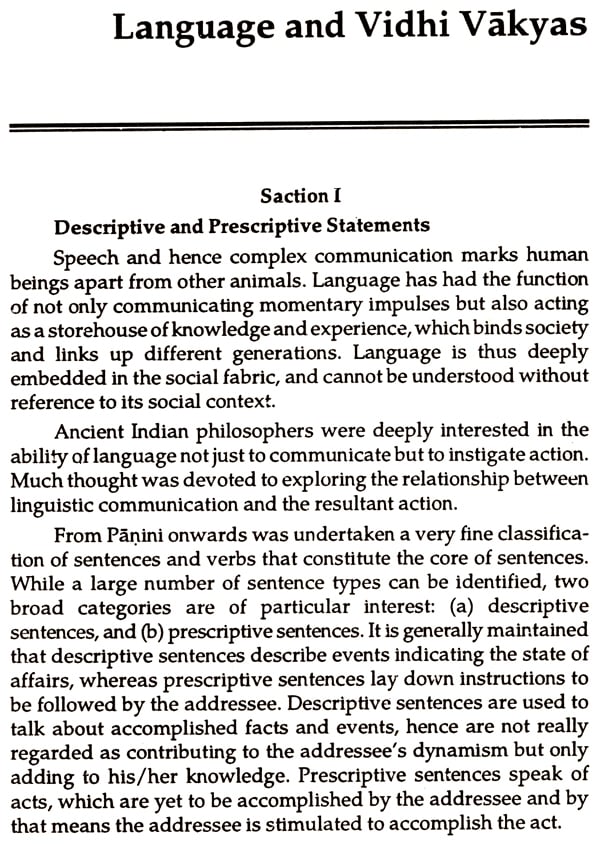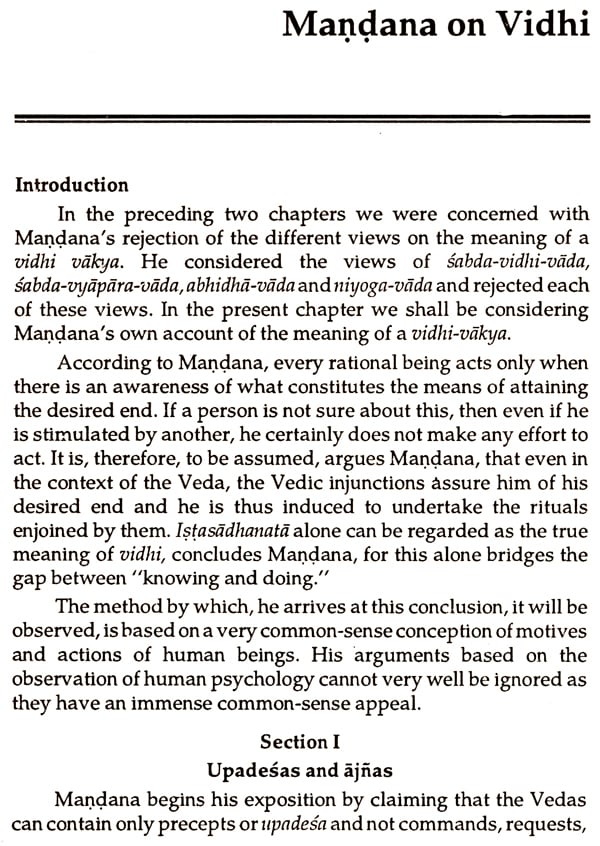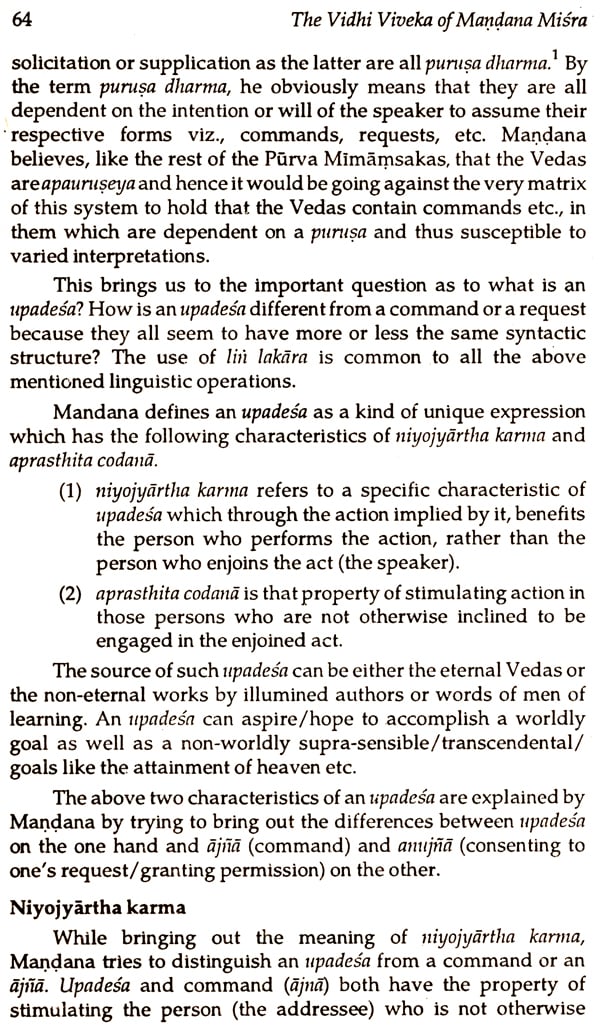
The Vidhi Viveka of Mandana Misra : Understanding Vedic Injunctions (An Old Book)
Book Specification
| Item Code: | NAT353 |
| Author: | Kanchana Natarajan |
| Publisher: | Sri Satguru Publications |
| Language: | ENGLISH |
| Edition: | 1995 |
| ISBN: | 8170304385 |
| Pages: | 156 |
| Cover: | HARDCOVER |
| Other Details | 9.00 X 6.00 inch |
| Weight | 290 gm |
Book Description
The present book is a study of an important work in Bhatta Mimamsa Sampradaya viz. The Vidhi Viveka .The. book is divided into six chapters.Ch.I-Language and Vidhi Vakyas; Ch.II-Language and Motivation ; Ch.III- The Doctrine of Niyoga ; Ch.IV- Mandana on Vidhi ; Ch.V- Istasadhanata and the Classification of Acts ; and Ch.VI-Conclusion. The book contains a detailed index .
Dr. Kanchana Natarajan is presently in the Department of Philosophy, University of Delhi.
The present book is a humble attempt to make a textual study of an important work in Bhatta Mimarnsa Sampradaya viz. the Vidhi Viveka of Shri Mandana Migra. Here an analysis of moral injunctions is made; however, the expression "moral injunctions" in the present context only refers to Vaidika Vidhi Vakyas, for according to the Purva Mimc7Insci, dharma is to be known only from the Vedic injunctions. It will also be noticed that often in this work, words like "goad," "instigate," "evoke," "stimulate," "inspire," "provoke," "motivate," etc. are used to express the term pravartana. Each of the above-mentioned terms has different connotation and thus different shades of meaning, yet here in this work, these are overlooked and used in one sense that of inspiring the addresses to act.
In the first chapter I have dealt with the function and frontiers of a natural language. Also a study of Vidhi Vakyas in general is undertaken with the help of typical examples so that we may be able to identify their characteristic features.
Mandana commences his analytical exposition of the optative suffix /in in a vidhi vcikya by raising the question: Is this liri a particular kind of word or is it a particular type of activity belonging to that word? Mandana gives substantial arguments against both the views. The second chapter seeks to study these alternative views and the refutation of the same by Mandana.
Prabhakara was the champion of niyoga vc7da. According to Prabhakara, niyoga or karya is the meaning of the injunction, and the knowledge of karyata is responsible for any human activity. A person undertakes to perform an action only upon having the karyata knowledge. Mandana refutes this position and concludes that the meaning of /in is not even niyoga or karyata. This is discussed in the third chapter.
What then is Mandana's view on the meaning of vidhi lin? This question is elaborately dealt in the fourth chapter. According to Mandana, the /in suffix of the optative mood expresses istasadhanata. A person acts, according to Mandana, only when he knows what constitutes the means of attaining the desired end. All this is discussed in great detail in the fourth chapter.
In the fifth chapter I have discussed a set of arguments put forth by Mandana in defence of his istasadhanata theory. Mandana, by postulating the theory that desire for fruit as the motive behind all actions, apparently obliterated the difference between the nitya and kamya karmas. This then became a point of debate between Mandana and his detractors. This is fully discussed in the above chapter.
In the last chapter I have drawn conclusions to throw some light or. Mandana's approach towards the philosophy of action which is somewhat in tune with Kumarila Bhatta's assertion . prayojanam anuddisya na mandopi pravartate.
**Contents and Sample Pages**












